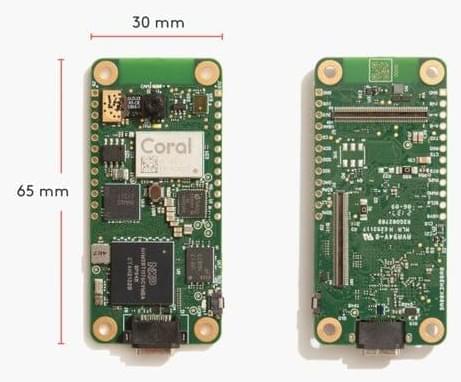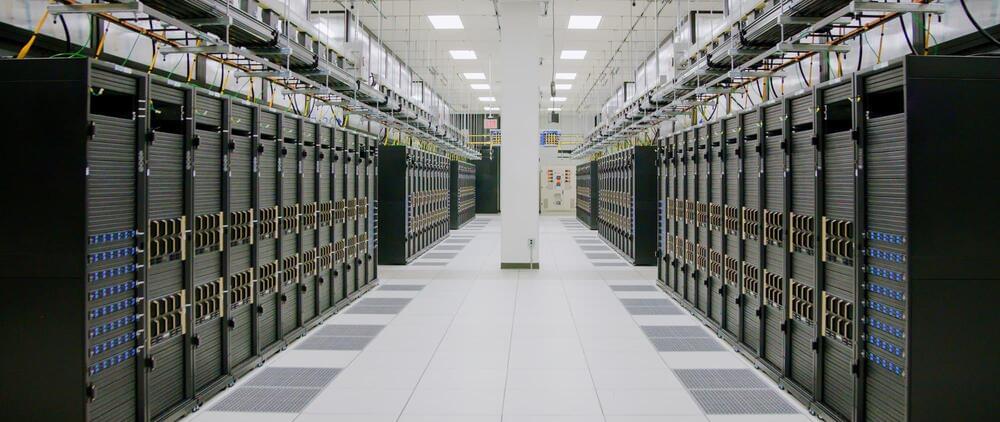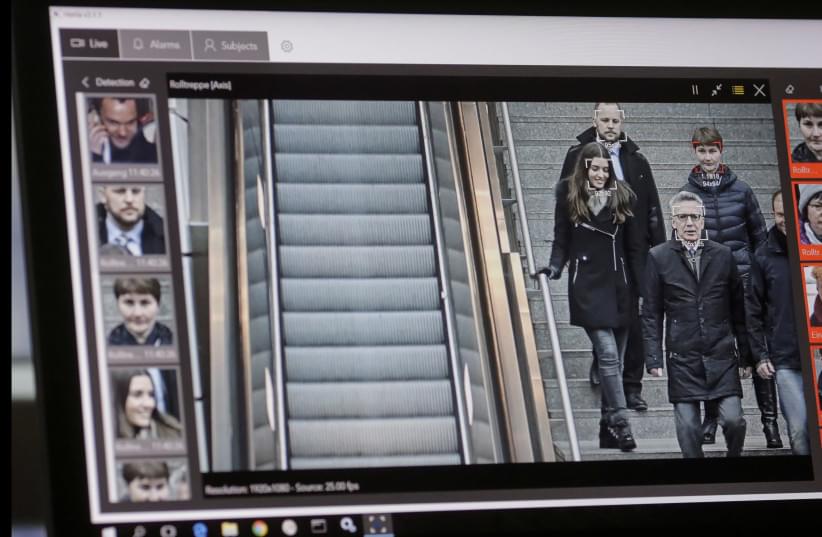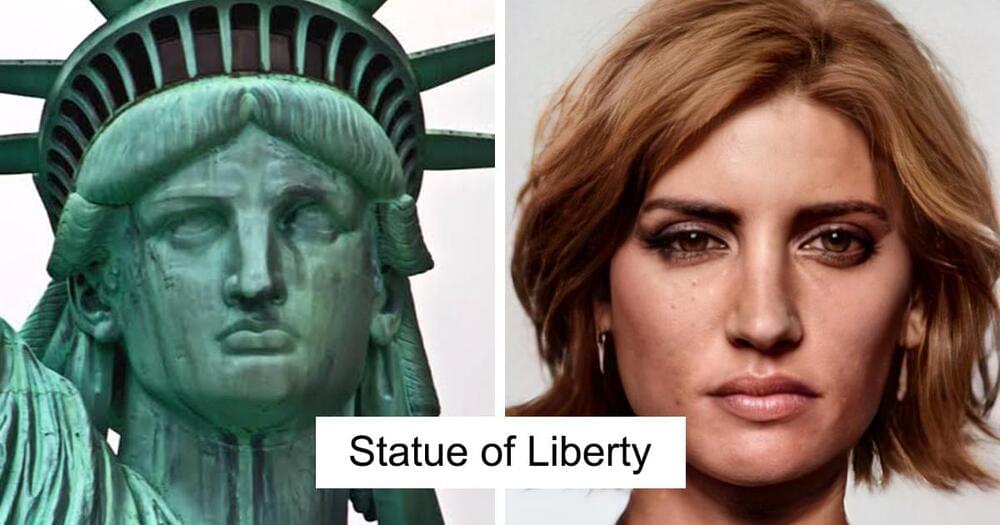The latest entry in the Coral range of low-power edge AI development boards is also Google’s first microcontroller board — “coming soon.”



Has the first phase of a new AI. Once the AI Research SuperCluster (RSC) is fully built out later this year, the company believes it will be the fastest AI supercomputer on the planet, capable of “performing at nearly 5 exaflops of mixed precision compute.”
The company says RSC will help researchers develop better AI models that can learn from trillions of examples. Among other things, the models will be able to build better augmented reality tools and “seamlessly analyze text, images and video together,” according to Meta. Much of this work is in service of its vision for the metaverse, in which it says AI-powered apps and products will have a key role.
“We hope RSC will help us build entirely new AI systems that can, for example, power real-time voice translations to large groups of people, each speaking a different language, so they can seamlessly collaborate on a research project or play an AR game together,” technical program manager Kevin Lee and software engineer Shubho Sengupta wrote.
👉For business inquiries: [email protected].
✅ Instagram: https://www.instagram.com/pro_robots.
https://www.youtube.com/watch?v=xppMgm2buuM
You are on the PRO Robots channel and in this video we present to your attention the news of high technology. Robots and technology for the military, Elon Musk’s tower, a new humanoid robot, new drones of unusual designs and robots for various tasks. See all the most interesting technology news in one issue! Watch the video to the end and write in the comments, which news surprised you more than others?
0:00 In this video.
0:20 Robot for garbage sorting.
0:52 Jet Suit from Gravity Industries.
1:45 SpaceX’s Mechazilla Tower.
2:15 HB1 Robot from HausBots.
2:50 Roboto from Nuro.
3:19 Alfred Robot arm.
4:15 HiPeRLab quadcopter.
4:51 ADAM Robot Barista.
5:20 Tocabi humanoid.
5:59 Warehouse robot Spider-Go.
6:43 Combination of drone and underwater robot.
7:17 Robot rover Brawler.
7:48 Stretch by Boston Dynamics.
8:31 Katy Perry shot a music video with Spot.
8:48 Robo C-2
9:20 Marker military robot.
#prorobots #robots #robot #futuretechnologies #robotics.
More interesting and useful content:
https://youtube.com/watch?v=E1AxVXt2Gv4&feature=share
Marcus Hutter is a senior research scientist at DeepMind and professor at Australian National University. Throughout his career of research, including with Jürgen Schmidhuber and Shane Legg, he has proposed a lot of interesting ideas in and around the field of artificial general intelligence, including the development of the AIXI model which is a mathematical approach to AGI that incorporates ideas of Kolmogorov complexity, Solomonoff induction, and reinforcement learning.
This episode is presented by Cash App. Download it & use code “LexPodcast”:
Cash App (App Store): https://apple.co/2sPrUHe.
Cash App (Google Play): https://bit.ly/2MlvP5w.
PODCAST INFO:
Podcast website:
Apple Podcasts:
https://apple.co/2lwqZIr.
Spotify:
https://spoti.fi/2nEwCF8
RSS:
https://lexfridman.com/feed/podcast/
Full episodes playlist:
Clips playlist:
EPISODE LINKS:
Hutter Prize: http://prize.hutter1.net.
Marcus web: http://www.hutter1.net.
Books mentioned:
- Universal AI: https://amzn.to/2waIAuw.
- AI: A Modern Approach: https://amzn.to/3camxnY
- Reinforcement Learning: https://amzn.to/2PoANj9
- Theory of Knowledge: https://amzn.to/3a6Vp7x.
OUTLINE:
0:00 — Introduction.
3:32 — Universe as a computer.
5:48 — Occam’s razor.
9:26 — Solomonoff induction.
15:05 — Kolmogorov complexity.
20:06 — Cellular automata.
26:03 — What is intelligence?
35:26 — AIXI — Universal Artificial Intelligence.
1:05:24 — Where do rewards come from?
1:12:14 — Reward function for human existence.
1:13:32 — Bounded rationality.
1:16:07 — Approximation in AIXI
1:18:01 — Godel machines.
1:21:51 — Consciousness.
1:27:15 — AGI community.
1:32:36 — Book recommendations.
1:36:07 — Two moments to relive (past and future)
CONNECT:
- Subscribe to this YouTube channel.
- Twitter: https://twitter.com/lexfridman.
- LinkedIn: https://www.linkedin.com/in/lexfridman.
- Facebook: https://www.facebook.com/LexFridmanPage.
- Instagram: https://www.instagram.com/lexfridman.
- Medium: https://medium.com/@lexfridman.
- Support on Patreon: https://www.patreon.com/lexfridman
10 ROBOT Predictions For 2022 | Boston Dynamics.
🔔 Subscribe now for more Artificial Intelligence news, Data science news, Machine Learning news and more.
🦾 Support us NOW so we can create more videos: https://www.youtube.com/channel/UCItylrp-EOkBwsUT7c_Xkxg.
If you’re anything like us, you probably can’t wait for the day you can go to the store and easily (and cheaply) buy a robot to clean your house, wait on you and do whatever you want. We know that day is a long way off, but technology is getting better all the time. In fact, some high-tech companies have already developed some pretty impressive robots that make us feel like the future is here already.
#Robot #Bostondynamics #futuretechnology.
📺 Fun fact: Smart people watch the entire video!
🤖 AI News Daily provides the latest Artificial Intelligence news and trends. Explore industry research and reports from the frontline of AI technology news.
LEAKED: latest artificial intelligence news | weekly.
🔔 Subscribe now for more Artificial Intelligence news, Data science news, Machine Learning news and more.
🦾 Support us NOW so we can create more videos: https://www.youtube.com/channel/UCItylrp-EOkBwsUT7c_Xkxg.
#ArtificialIntelligence #news #futuretechnology.
📺 Fun fact: Smart people watch the entire video!
Watch More from Artificial Intelligence News Daily.
🟢 Boston Dynamic News: https://youtube.com/playlist?list=PLi7ozibUCGOvQegVXq-ArQSyDcwXqQqls.
🟠 Robot news: https://youtube.com/playlist?list=PLi7ozibUCGOvWDRGAdGxOZx40pjk82hhd.
🔴 Artificial Intelligence News: https://youtube.com/playlist?list=PLi7ozibUCGOuaUErL6-zIj5_R2E7q_cf4
🤖 AI News Daily provides the latest Artificial Intelligence news and trends. Explore industry research and reports from the frontline of AI technology news.
🔔 Subscribe now for more Artificial Intelligence news, Data science news, Machine Learning news and more.
🦾 Support us NOW so we can create more videos: https://www.youtube.com/channel/UCItylrp-EOkBwsUT7c_Xkxg.
From the home to the workplace, and to the sky above, robots in 2022 are transforming the world we know —and helping us understand the worlds we don’t. Let’s highlight a few of these remarkable machines and how they might transform not only how we interact with ourselves, but also the universe around us. We will take about the following robots: Mars Perseverance & Ingenuity, Moley the Robotic Chef, Toyota’s Robotic Butler, Spot by Boston Dynamics, Digit by Agility Robotics, Atlas by Boston Dynamics, Guardian XO Exoskeleton, Vicarious Medical Robot, British loyal wingman and Xenobots!
#robot #robotics #bostondynamics.
📺 Fun fact: Smart people watch the entire video!
🤖 AI News Daily provides the latest Artificial Intelligence news and trends. Explore industry research and reports from the frontline of AI technology news.

The firm partnered with Israeli startup Corsight AI to develop the facial recognition cameras to be worn by police officers, Tirza told AFP.
By matching faces to old photographs on its database, the camera developed by Yozmot will be able to instantly identify people in a crowd, even if they are wearing camouflage, make-up or masks.
Corsight refused to confirm the collaboration with Yozmot, according to AFP, but has said that it was working with some 230 “integrators” worldwide who incorporated facial recognition software into cameras.

There are few environments as unforgiving as the ocean. Its unpredictable weather patterns and limitations in terms of communications have left large swaths of the ocean unexplored and shrouded in mystery.
“The ocean is a fascinating environment with a number of current challenges like microplastics, algae blooms, coral bleaching, and rising temperatures,” says Wim van Rees, the ABS Career Development Professor at MIT. “At the same time, the ocean holds countless opportunities — from aquaculture to energy harvesting and exploring the many ocean creatures we haven’t discovered yet.”
Ocean engineers and mechanical engineers, like van Rees, are using advances in scientific computing to address the ocean’s many challenges, and seize its opportunities. These researchers are developing technologies to better understand our oceans, and how both organisms and human-made vehicles can move within them, from the micro scale to the macro scale.
